It’s here!… It’s here?!… It’s… here! Our FEDCO order recently landed, catalyzing a mad-dash to get things in the ground. Please enjoy our next installment of the Working Out Back with Poppy series: FEDCO Order Spring Bonanza and More Apple Trees.
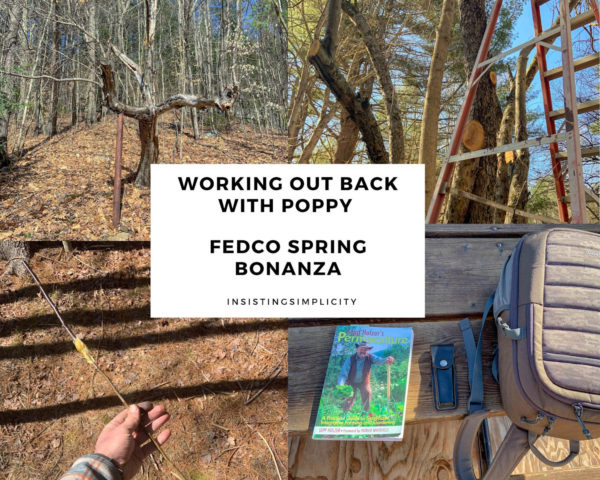
Workin' Out Back With Poppy Series
The purpose of the Workin’ Out Back With Poppy series is to showcase permaculture techniques in action. Permaculture design is experiential. We learn by doing.
We can read books and talk to experts, but to gain a deeper understanding (and appreciation) of permaculture, we must practice it.
And who’s this Poppy character anyway? Well, if and when you’re fortunate enough to become a grandparent, I understand the “what to call oneself” conversation is a big deal. When my folks became grandparents in the not-too-distant past, the names Poppy and Meme emerged, likely in jest, but they stuck.
So, Dad is now Poppy and these are the tales of workin’ out back.
Related:
First post: Workin’ Out Back with Poppy
FEDCO Order (Apple Trees) Arrives... It's Here!
Let’s just say I was excited to see the FEDCO order on the doorstep.
Game on!
If you remember from our first post, we ordered 10x semi-dwarf rootstock and 10x corresponding scion of different varieties.

As with any exciting endeavor, the reality of the situation hit me only later. Upon actual receipt:
Oh, blank! I gotta get these in the ground!
I quickly felt the sense of urgency that comes with “being on the clock.” Although the rootstock keeps for some time if properly tended to, as an amateur, I want to err on the side of caution and not test the limits.
Off to Poppy and Meme’s for apple adventures!
The Plan for the FEDCO Order
We previously discussed permaculture design in depth. Today, we’ll just touch on the day’s loose plan for this FEDCO order.
First, we consulted an old friend and trusted neighbor with fruit tree experience, Joe. As we walked about Joe’s “out back,” I was shocked by the variety and sophistication of his small backyard orchard. We chatted about the trees (and not just apple trees, peaches, pears, plums, oh my!), about transplanting, grafting, pruning, supporting and so on.
It was a great learning experience that solidified some ideas, while encouraging deviations elsewhere.
So off we went…
Loppers, chainsaws and ladders away!
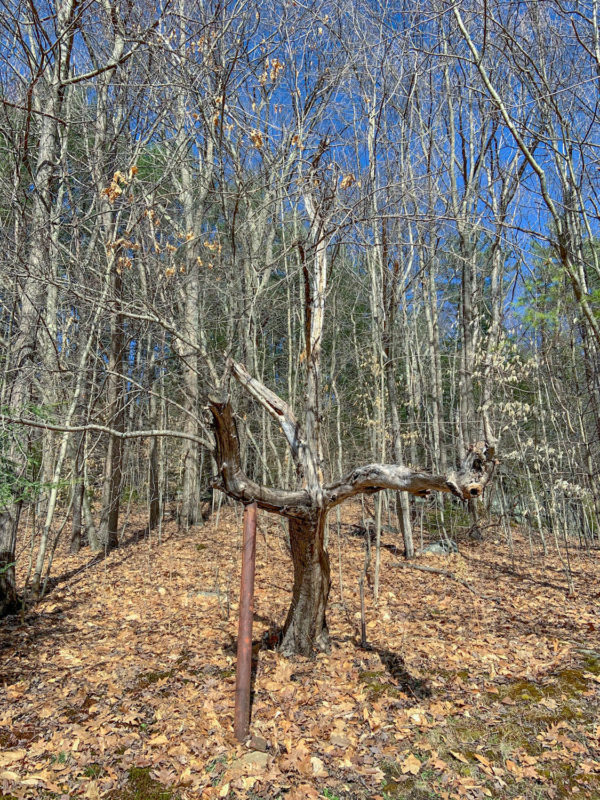
The Execution of our FEDCO Order
Boppin’ around, a-prunin’ and a-plantin’, we made our way…
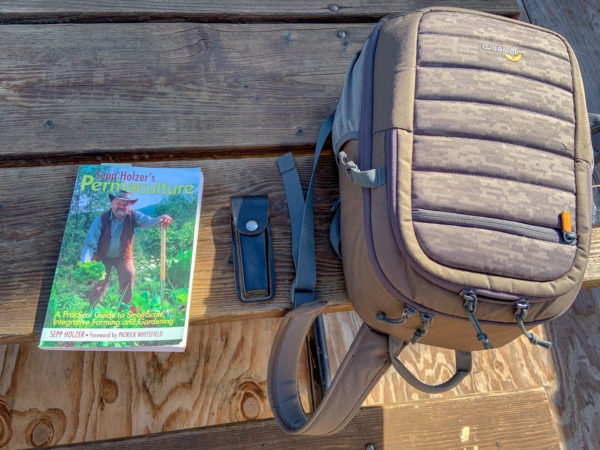
Old Apple Trees
We attempted to clean up dead limbs and prune new growth situated low on the trees and/or angled back into the tree.
Quickly falling into the cheerful and productive work rhythm, only achievable with familiarity and trust, Poppy and I moved like worker bees.
We buzzed about the bases of the old apple trees peppered about the hillside and climbed via ladder to their upper limbs. For a few of these old dogs, we could reach the crowns, most, not even close.
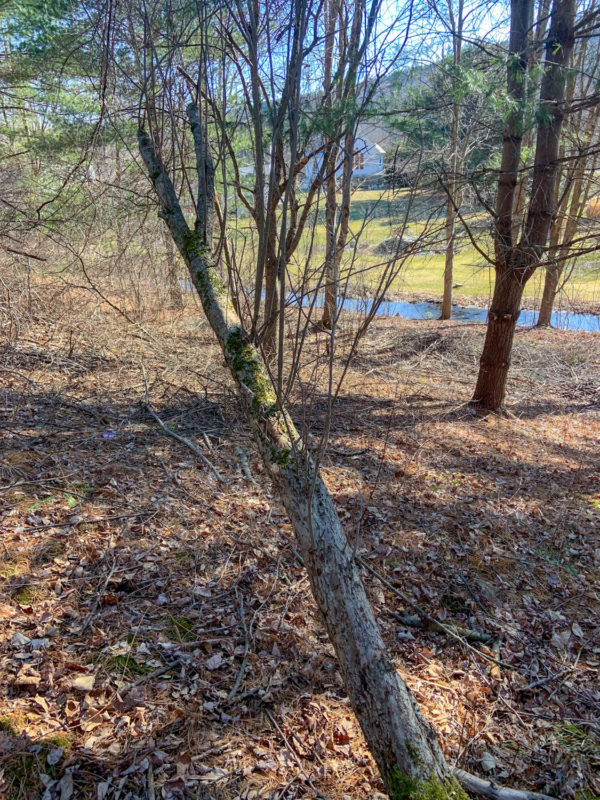
Later on, Joe, an historian and naturalist, discussed various interesting concepts. He spoke of the likely origins of the old apple trees and homestead site, catapulting us back in time over a century. Other topics, such as the soil and regional geology, necessitated mental time travel back millions of years.
In sprucing up these old friends, we quickly found that Nature already did most of the work, i.e. limbs not serving the tree, eventually died off naturally. Thus, most of our limb work involved removing the dead and brittle, making quick work (and great firewood!).

Poppy and I found removing just dead branches unburdened the trees nicely and we could then focus on water spouts and inward-facing branches.
We did a lot, but our desire to visit a multitude of trees, without excessively shocking any one tree with over-pruning, restrained our busy hands.
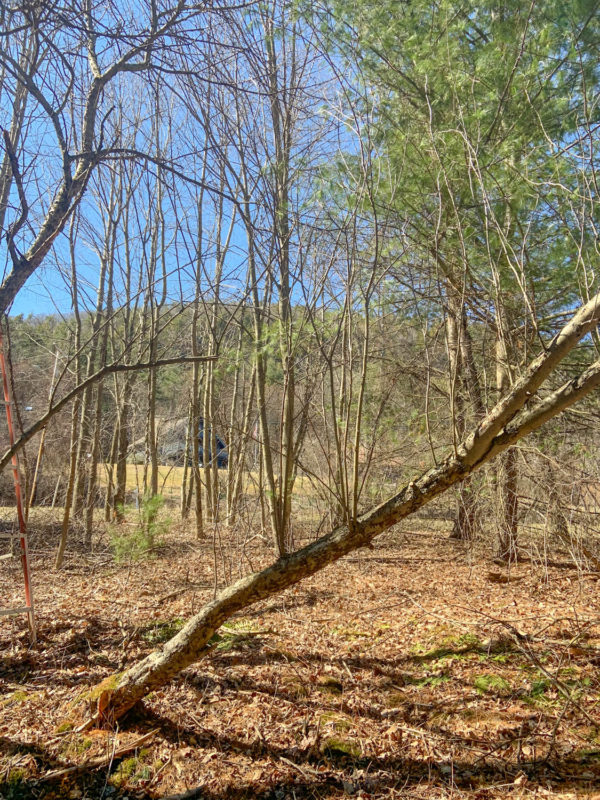
New Apple Trees
Grafting trees is simple, but not easy. I imagine, as I have no personal experience whatsoever, grafting trees may be somewhat akin to conducting a simple surgical procedure. Likely my own hubris and naivety, but I thought I’d pick it up lickity-split and we’d be off to apple town!
Not so fast, bucko.
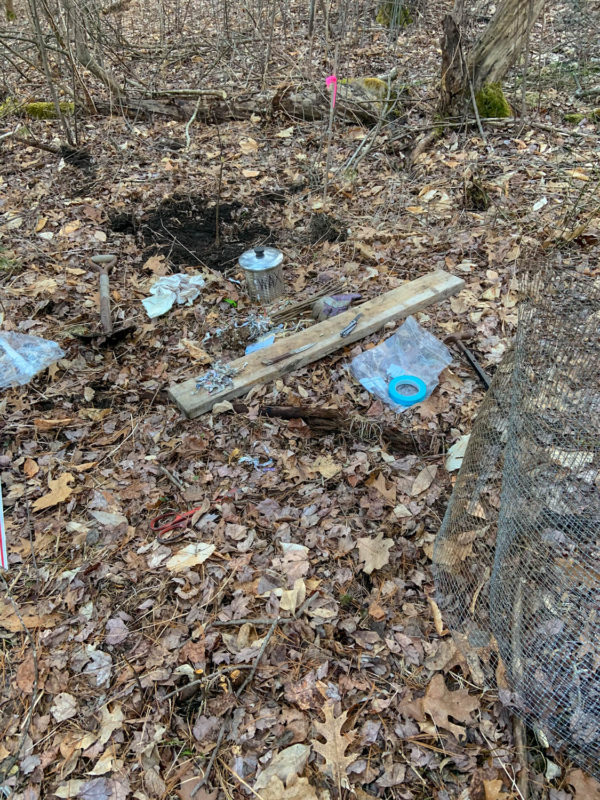
I found that precision, concentration, patience and proper tools are the recipe for a positive grafting experience. (Notice, I’m using the phrase “positive grafting experience” and not “successful graft”)
We moved about the hillside, running out of daylight, whipping and tonguing our way through six graft and plants.
This is my first time going at it. (deep intake of breath)
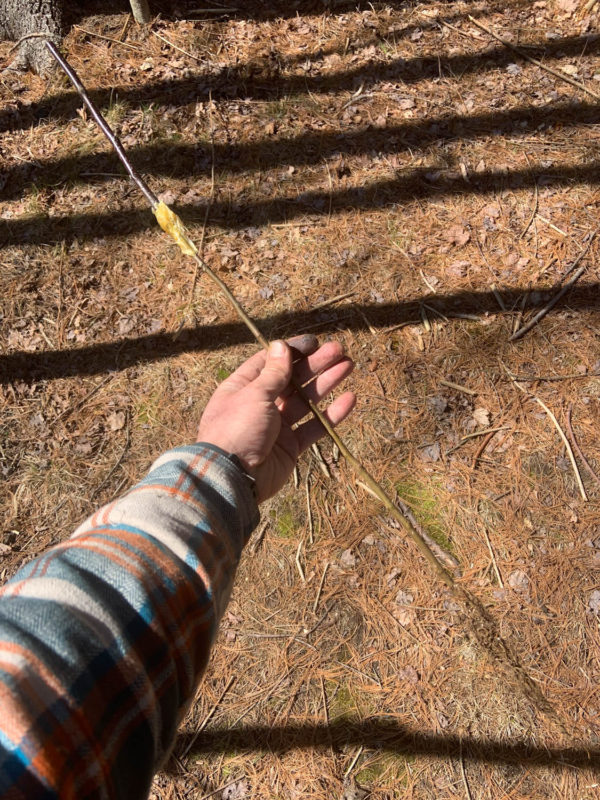
What’s my confidence level on their success? You may be asking yourself…
About 15%, if I am completely honest.
Oof.
I hope I’m wrong.
Good news: I think I improved my process as I went and may have more success with the remaining 4x (remember we ordered 10x total!). More to come…
The Party
In typical fashion, we worked our butts off into dusk and celebrated with delicious food and a nice campfire.
We talked about the trees, what we did, the present, and their implications for the future.
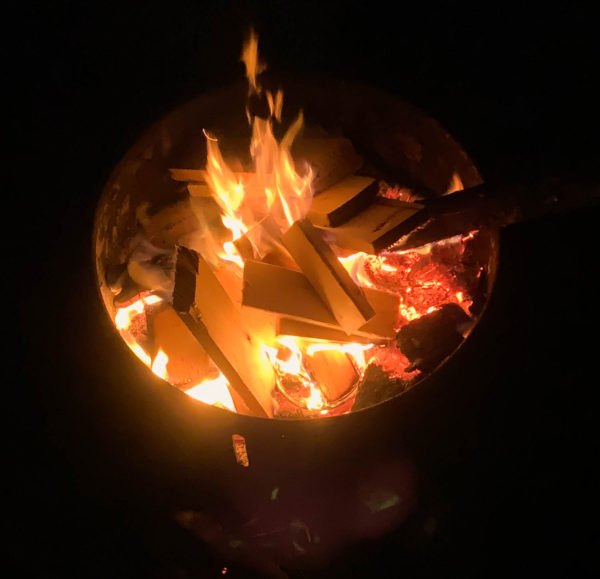
Clear as day, trees understand the world through a different time horizon than humans, one that is much longer.
Many of the apple trees we worked are well over 100 years old. These old gentle giants were once youngsters themselves, the apple of the eye of an enterprising farmer. Over time, they were forgotten.
Entirely forgotten, by the droves of passers-by today on the road just a short distance away, but not so by these here caretakers.
Calibrating to Nature’s time horizon, that which is infinite and impermanent, we can better understand an appropriate approach to the gentle giants and our new rootstock plantings.
The gentle giants are indeed full of life… they just need a little haircut. They will be returned to their glory and bear fruit once again. They will be matriarchs and patriarchs to the new plantings we introduce on the property.
The bees will visit both the geriatrics and adolescents, while nurtured by the arborist, an underburdened shepard of flocks.
Next Steps... Apple Trees and Beyond?
Well, as I mentioned, we only got 6x rootstocks in the ground. That leaves 4x to be discussed…
Oh, and did I mention the vineyard?

